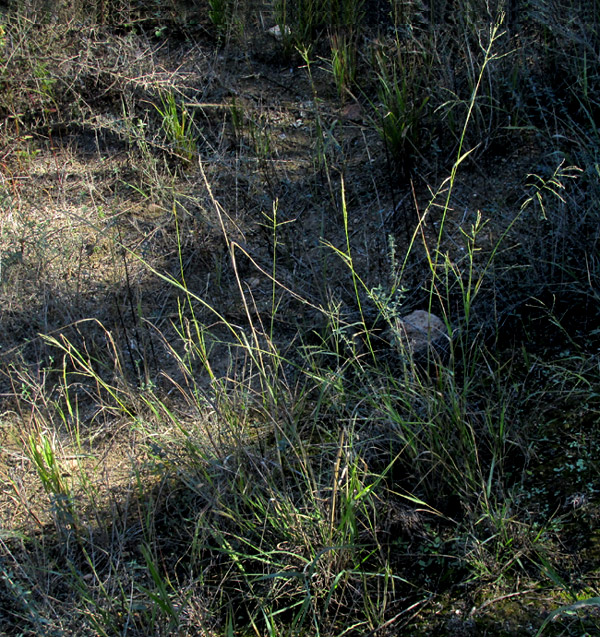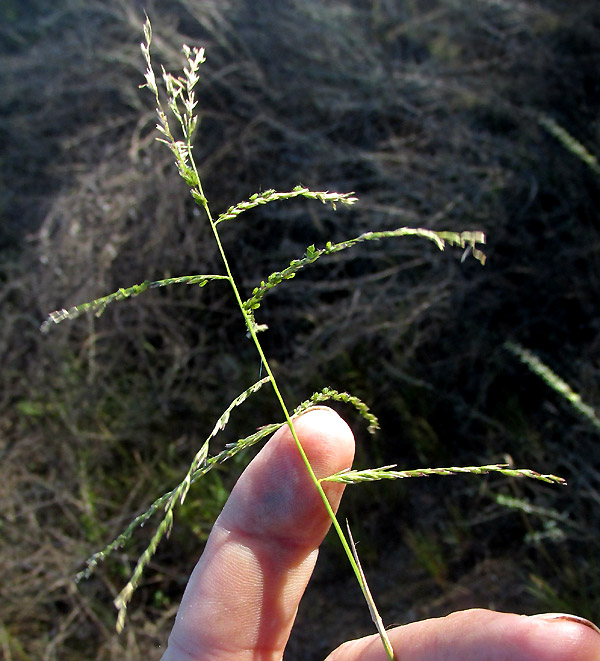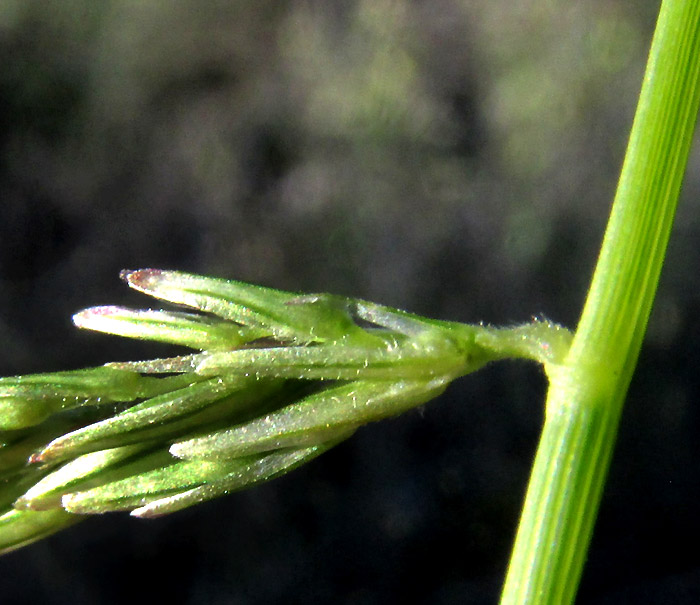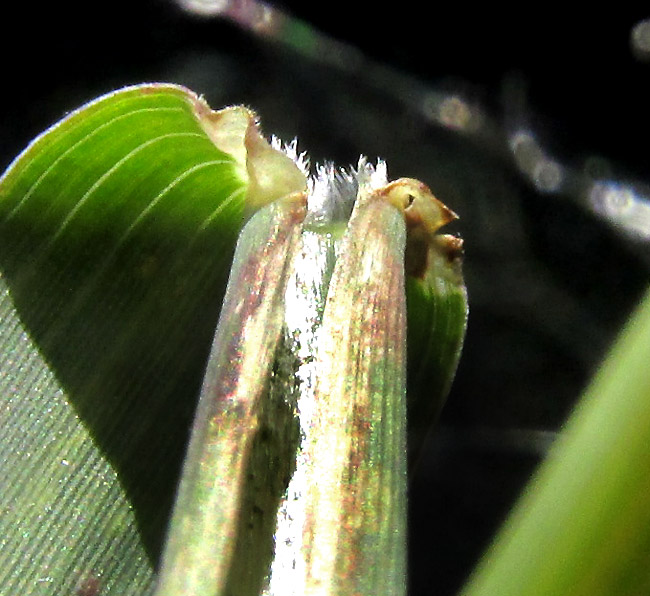Excerpts from Jim Conrad's
Naturalist Newsletter
Entry dated January 10, 2024, issued from near Tequisquiapan; elevation about 1,900m, (6200 ft), ~N20.57°, ~W99.89°; Querétaro state, MÉXICO
MEXICAN SPRANGLETOP

In thin soil atop a ridge in a much gullied area atop compacted volcanic ash, or tuff, and during a two-year, ongoing drought classified by the North American Drought Monitor as a D3 Extreme Drought, the above community of clump grass was flowering despite it all.

Above, the central stem, or rachis, of the grass's panicle-type inflorescence bears widely spreading slender branches. Each branch beares numerous spikelets, which keep close to the branch stem, or rachilla. Later, for identification purposes, it would be necessary to notice that the leaf immediately below the inflorescence is much shorter than the inflorescence itself.

Above, the base of a branch shows several spikelets, each usually bearing 6-9 florets. For identification, note that the lemmas -- the individual florets' lowermost, scale-like bracts -- are blunt, but sometimes bearing a tiny, toothlike projection.

Where blades met the stems, atop split sheath surrounding the stems, white, membranous ligules were deeply incised, or lacerate, along their tops.

Stem nodes were hairless.
In our part of semiarid, upland cental Mexico, if you have a non-woody, non-aquatic grass with a panicle-type inflorescence whose primary branches are 4-12cm long (1.6-4.7 inches), whose spikelets produce four or more florets bearing both male and female parts, the spikelets are arranged along slender branches to which they're attached by very short stalks, or stipes, the florets' lemmas are not needle-tipped, and the second glume bears only one or maybe two nerves, you have a grass whose species are known as sprangletops.
In our part of semiarid, upland, central Mexico, if you have a sprangletop agreeing with the above description, and whose ligules when mature look like our much-lacerated ones, you have what's currently named by Kew's Plants of the World Online database DIPLACHNE FUSCA subspecies UNINERVIA, often known as Mexican Sprangletop.
Taxonomically, this species has long been knocked about for a long time, and may be known by different names in different publications. The online Flora fanerogámica del Valle de México calls it Leptochloa uninervia. But plants going by that name were demoted to subspecies level to become Leptochloa fusca ssp. univervia. Then later that taxon was returned to a name first published for it in 1817, Diplachne fusca ssp. uninervia. Over the years, the taxon has accumulated 30 synonyms, though it's always been one of maybe a little over 30 species known commonly as sprangletops.
Diplachne fusca ssp. uninervia is native from the southern US south to Argentina, but it turns up elsewhere as an invasive. It's one of four subspecies, the other three mostly native to Australia, or mostly north of here. The Flora of North America currently reports our subspecies as possibly intergrading with the more northern subspecies fasicularis, but our plants look solidly uninervia. The subspecies is fairly weedy and drought tolerant.
Most Internet pages treat our grass from the perspective that it can be a serious weed in planted fields. Our top picture illustrates what might possibly be the plant's greatest contribution to the wider community of living things: It grows where soil has been so degraded by human use, and where rain is scant or so erratic that other plants can't live there. Its extensive fibrous roots hold soil in place, and its dead leaves fall onto the soil protecting the soil surface.